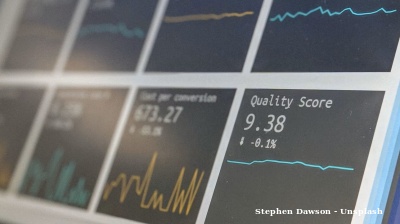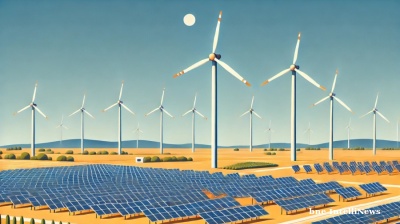In 2023, the yuan became the most popular currency on the Moscow Exchange, beating even the dollar, as Russia has been forced to completely remake the way it pays for international trade. Uniquely, it has attempted to entirely replace the dollar with the Chinese national currency. And China has been a willing partner.
“China tells Western countries it respects their sanctions on Russia, but it operates on the principle of “everything that is not banned is allowed.” The real beneficiaries of Moscow’s “pivot to the East” have been second- and third-tier Chinese companies, particularly banks. At the level of cross-border transactions, payment systems for Russian rubles and Chinese yuan have replaced the SWIFT global bank messaging network and other traditional financial structures,” Alexandra Prokopenko, a political economy analyst, said in a note for Carnegie Endowment for International Peace May 27.
The SWIFT sanctions that were imposed only days after Russia’s invasion of Ukraine have been painful but Russia has managed to find alternative payment methods and its trade has not been halted or even significantly affected. The annual value of bilateral trade topped $240bn in 2023, according to Chinese customs data. Chinese exports to Russia were $111bn, two thirds (67%) more than in 2021, and Chinese goods now account for just over a third (38%) of Russia’s imports, while another third (31%) of Russia’s exports go to China, according to Prokopenko.
China has moved in to fill some big holes in the Russian market created by exiting multinationals. Soaring demand for cars allowed China to overtake Japan to become the world’s biggest exporter of cars and trucks in 2023; Chinese car exports to Russia rose 594% in that year, while exports of trucks and tractors rocketed almost 700%.
But the relationship is very one-sided; Russia is a far less significant trade partner for China than China is for Russia. Russia’s share of China’s total trade turnover between January and October 2023 was just 3.9%. Russian goods only made up 5.1% of China’s imports, while Russia was the destination for just 3.3% of Chinese exports.
To pay for this trade, Russia has been through a process of yuanisation of its economy, dumping the dollar as a store of wealth and exchange medium of trade. Payments for Chinese goods shipped to Russia and Russian goods sent to China were rapidly converted to yuan. By December 2023, about one-third of Russia’s foreign trade was regularly settled in yuan. There was $68.7bn held in yuan in Russian banks in 2023 (exceeding the $64.7bn held in US dollars). The value of yuan-denominated loans in Russia has more than tripled to $46.1bn (mainly via the conversion of debt previously held in US dollars and euros). And the share of yuan in trades on the Moscow Exchange in 2023 was 42%, exceeding that in the US dollar, according to Prokopenko.
Secondary sanctions
Russia’s Achilles’ Heel remains its trading partners' exposure to possible US secondary banking sanctions. Russia may have been cut off from the international payment system, but these partners have not and are not willing to risk being cut off.
OFAC’s introduction of smart sanctions in December 2023 imposed on financial institutions that work with Russia’s defence sector has complicated cross-border transactions. Some Chinese banks have stopped accepting Russian payments entirely (including Ping An Bank, Bank of Ningbo, China Guangfa Bank, Kunshan Rural Commercial Bank, Great Wall West China Bank, Shenzhen Rural Commercial Bank, Dongguan Rural Commercial Bank and China Zheshang Bank). A slew of Turkish banks likewise cut ties with Russian clients. Settlements shifted to smaller banks that don’t have business with the US, but that slowed things down; the average processing time for such payments rose to eighteen days.
And the new sanctions have negatively impacted the Russo-China trade: in March 2024 Chinese exports to Russia fell by 16% year on year – the first time trade volumes decreased since the start of the war in 2022. The trend continued in April with a drop of 13.5%.
“However, the effect of US sanctions has been limited, and trade is a long way from grinding to a halt. Indeed, the proportion of trades made in yuan on the Moscow Exchange has continued to increase, rising from 46.6% in February to 53% in March,” says Prokopenko. “Nor have all Chinese banks stopped dealing with Russian clients. Regional banks – of which there are more than 4,500 in China – still work with Russia. Sanctions-busting schemes that involve a multitude of middlemen from other jurisdictions are also spreading. If the typical scheme before the secondary sanctions signed off last year was ‘client–Russian bank–foreign bank–client,’ now as many as five other banks can be involved.”
Russian companies have been becoming experts in setting up these daisy-chain schemes involving dozens of intermediary companies to hide the final destination of the trade. According to a recent study by the EU a typical import deal can have as many as 50 intermediaries. Another study by Kyiv School of Economics (KSE) found that a third of Russia's technology imports still originate in the West despite being officially sanctioned.
“When some Chinese banks stopped working with Russian companies, the office of Russia’s state-owned VTB Bank in Shanghai experienced a spike in demand for its services, and saw lines of people wanting to open accounts. Chinese regional banks have also spoken of lacking staff to service Russian clients. But these all look like temporary problems,” says Prokopenko.
Alternative payments systems
The Central Bank of Russia (CBR) has been preparing for the West to attack its ability to settle international payments for a long time. After the first round of sanctions was imposed following the annexation of Crimea in 2014, the regulator set up the Financial Communications System (SPFS), an alternative to SWIFT, and also the Mir credit card system, both of which remain under Russia’s control. It meant, for example, that despite the exit of VISA and Mastercard, payments using these cards could still be made inside Russia and the next year Russia banned the use of SWIFT entirely.
Moscow has been trying to bring its foreign trade partners into the SPFS and Mir systems with mixed success. By the end of 2023, 557 banks and companies – including 159 non-residents from twenty countries – had signed up to join SPFS, all from so-called friendly countries, but Chinese banks have yet to join as they remain heavily exposed to the US market thanks to large scale trade that China continues to maintain with America.
At the same time, 23 Russian banks signed up for China’s Cross-Border Interbank Payment System (CIPS), including many sanctioned banks, and the average number of daily transactions via CIPS increased 50% in 2022, and was up 25% in the first nine months of 2023.
“CIPS is even being used by third countries to make payments to Russia. In April 2023, for example, Bangladesh settled with a Russian nuclear power developer in yuan. Before the war, such operations were rare – but now they are becoming common. In this sense, Western sanctions against Russia have been a huge boon for Beijing as they have led to a strengthening of the yuan’s international status,” says Prokopenko.
China is happy to see the status of the yuan boosted as it strives towards making the yuan a leading foreign exchange currency for the settlement of international trade deals and a reserves currency as part of its long-term de-dollarisation campaign.
Not natural allies
After he was inaugurated to his fifth term in office, the first foreign trip Russian President Vladimir Putin made was to China, where he received the red-carpet treatment from Chinese President Xi Jinping. While China and Russia have never been considered natural allies, the two leaders have declared a “no-limits” relationship as they join forces to face down mounting US pressure. Nevertheless, China’s support for Russia is grounded in pragmatism, not ideology.
“Russia and China like to call their relationship a “no limits” partnership. But the reality is very different. Despite the record trade figures, the balance of power is tipped toward China. By observing Western sanctions, Beijing is supplying not what Russia needs, but what it can make money on,” says Prokopenko.
The value of dual-use civilian and military goods sold to Russia by China in 2023 only increased by $1bn, whereas total exports to Russia from China rose 47% to $111bn in the same period.
Sanctions have stymied Russia’s international trade, but it has successfully dodged the majority of them. However, the threat of sanctions have been far more effective in curbing the extent that China is willing to help Russia as it remains largely sanctions compliant in its trade with Russia.
“In many ways, the war in Ukraine amounts to an enormous present from Russia to China, and it has strengthened China’s geopolitical ambitions to become an alternative centre of global influence. Beijing has been able to thoroughly test financial systems that offer an alternative to the West, while second- and third-tier Chinese companies have acquired access to a large new market,” says Prokopenko.
Features

Agentic AI becomes South Korea’s next big tech battleground
As countries race to define their roles in the AI era, South Korea's tech giants are now embracing “agentic AI”, a next-generation form of AI that acts autonomously to complete goals, not just respond to commands.

Iran's capital Tehran showcases new "Virgin Mary" Metro station
Tehran's new Maryam metro station honours Virgin Mary with architecture blending Armenian and Iranian design elements in new push by Islamic Republic

Indonesia’s $80bn giant seawall
Indonesia’s ambition to build a colossal seawall along the northern coastline of Java has ignited both hope and heated debate. Valued at around $80bn, the project aims to safeguard the island’s coastal cities from tidal floods and erosion.

The Asian nations backing the Russian war effort – from India to Taiwan, China to Indonesia
While many Asian nations have quietly distanced themselves from Moscow in a bid to fall into line with US or European allies, several continue to engage with Russia, providing varying degrees of support that help sustain its military campaign.




